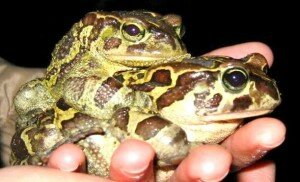 City commences Skilpadsvlei restoration project in Kommetjie
City commences Skilpadsvlei restoration project in Kommetjie
The Skilpadsvlei area in Kommetjie – which used to be the only known breeding site of the endangered western leopard toad (Amietophrynus pantherinus) in this area is being restored by the City of Cape Town’s Environmental Resource Management Department.
The Skilpadsvlei forms part of the historic wetland system, which is currently protected as a public open space within Erf 3719 and Erf 3720 on Benning Drive in Kommetjie. It still contains seasonal wetlands and a substantial Milkwood (Sideroxylon inerme) thicket which is also of environmental significance.
The Skilpadsvlei project seeks to restore and enhance the wetland system as well as to re-establish the breeding site of the endangered western leopard toad, which was destroyed as a result of the 1940s trend to fill in wetlands. The restoration of the breeding site will not only be of significant conservation value for a threatened species, but the wetland system as a whole will also be improved and more efficiently contribute to the ecological services of the area – such as purifying water and regulating run-off.
The rehabilitation efforts will initially be restricted to the re-creation of a wetland area in the disturbed section of Erf 3719, a portion of the historic extent of Skilpadsvlei, but will also include efforts to restore the ecological functioning of the existing seasonal wetland area and to aesthetically enhance the public open space.
The re-creation of the western leopard toad breeding site will be restricted to a portion of the historic extent of the water body as service infrastructure has been installed across Erf 3719. There is, however, adequate space to recreate a suitable wetland area. The wetland needs to hold water until the end of January in order to ensure that the western leopard toad tadpoles have sufficient time to develop.
The initial phase will include removal of fill material with earth-moving equipment. The edges will be sloped manually to ensure a natural gradient. The re-establishment of the locally indigenous vegetation will thereafter be an ongoing process as previous experience has shown great success allowing re-establishment from the seed bank contained in the uncovered peat layer. The natural germination will, however, be augmented with planting of locally indigenous plants.
It is hoped that sufficient western leopard toads still occur in the Kommetjie area to allow a breeding population to naturally re-establish at Skilpadsvlei. The site will be monitored and, if a population is not established, plans will be made to introduce animals from the nearest existing population. Any reintroduction efforts will be planned and implemented with expert input and all of the relevant permits.
This rehabilitation project is a valuable opportunity to restore an ecologically sensitive area, contribute to the conservation of an endangered species and also enhance a valuable public asset. Various City line functions and external partners are involved in contributing to the success of this project and we look forward to the results of this collaborative effort which will be an asset to future generations.
Issued by: Communication Department, City of Cape Town
Media enquiries: Suretha Dorse, Environmental Professional, Environmental Resource Management Department, City of Cape Town, Tel:
